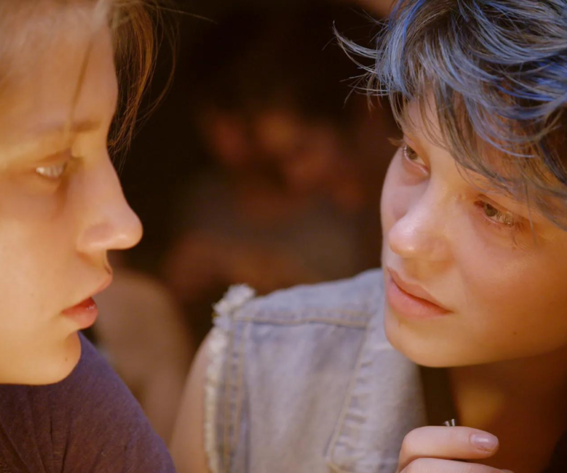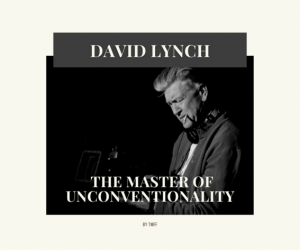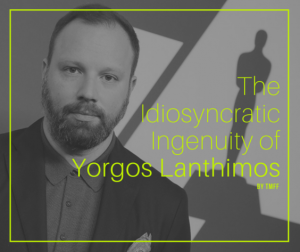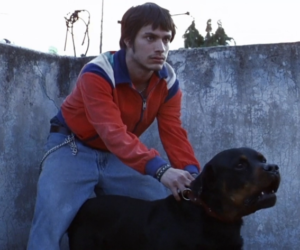I’ve already made the habit of exploring a country’s or wider region’s cinematic characteristics once per month. And, it so happened that over the holiday period, I watched not just one, but two French films – and thus decided which country my next exploration would focus on. French cinema has woven a rich cultural narrative that resonates globally, and while perhaps never reaching the mainstream appeal that other filmmaking countries have, French cinema has retained its position as one of the most recognisable and influential.
Artistic Innovation: Auteur Mastery and Creative Vision
At the core of French cinema’s uniqueness is the celebration of the director as an auteur, a true artist whose creative vision shapes every frame of a film. The Auteur theory, born in the 1950s, is epitomized by directors like François Truffaut and Jean-Luc Godard, stalwarts of the French New Wave. Truffaut’s “The 400 Blows” (1959) and Godard’s “Breathless” (1960) showcase their rebellious spirit, introducing unconventional narratives and a departure from traditional filmmaking norms. The influence of these auteurs extends to contemporary French cinema, fostering an environment of artistic innovation and a commitment to pushing creative boundaries.
Embrace of Realism: Cinéma Vérité and Societal Reflections
French cinema has a longstanding tradition of embracing realism, particularly through the Cinéma Vérité movement. This approach blurs the lines between fiction and documentary, capturing life as it unfolds. Jean Rouch, a trailblazer in this movement, crafted “Chronicle of a Summer” (1961), offering an unfiltered glimpse into 1960s France. The commitment to social commentary through realistic portrayals continues in contemporary French cinema, providing a lens through which audiences can engage with the intricate tapestry of the human experience. This emphasis on realism forms a unique and enduring characteristic of French filmmaking.
Symbolism and Surrealism: A Cinematic Dreamland
French cinema’s fascination with symbolism and surrealism adds an enchanting layer to its storytelling. René Clair’s “Entr’acte” (1924) blends Dadaist influences with surreal imagery, creating a silent film masterpiece that challenges conventional narratives. Jean Cocteau’s “Beauty and the Beast” (1946) elevates the fairy tale genre with its symbolic richness. Symbolism and surrealism in French films invite audiences into a cinematic dreamland, encouraging interpretation and reflection. These elements contribute to the artistic depth that defines French cinema, showcasing a commitment to exploring storytelling beyond the ordinary.
International Collaboration: Cinematic Unity Across Borders
French cinema’s global reach is epitomized by its openness to international collaboration and co-productions. Directors like Krzysztof Kieślowski, from Poland, collaborated with France on the acclaimed “Three Colors” trilogy. This spirit of collaboration not only enriches French cinema but also serves as a bridge for cultural exchange. Films become ambassadors of artistic diplomacy, fostering unity and diversity on the global cinematic stage. The willingness to engage with filmmakers from different cultures amplifies the impact of French cinema, creating a dynamic and interconnected cinematic landscape.
Focus on Character Development: Intimacy and Complexity Unveiled
A distinctive feature of French cinema lies in its emphasis on character development, unraveling the intricate layers of human relationships. Michael Haneke’s “Amour” (2012), a French-language film, is a poignant exploration of love and aging, emphasizing intimacy and emotional depth. The commitment to character-driven narratives elevates the emotional impact of French films, inviting audiences to empathize with the complexities and vulnerabilities of the characters. This focus on the human experience forms a powerful and enduring aspect of French storytelling.
Political Engagement: Films as Sociopolitical Statements
French cinema has a rich history of political engagement, with filmmakers using their craft as a tool for sociopolitical commentary. Agnès Varda, a pioneer in documentary-style filmmaking, presents “The Gleaners and I” (2000), offering a thought-provoking perspective on consumerism and waste. This commitment to addressing societal concerns reinforces French cinema’s role as a mirror reflecting the broader cultural and political landscape. French filmmakers navigate the complexities of contemporary issues, contributing to a dynamic dialogue through their cinematic narratives.
Celebration of Eroticism: Cinematic Sensuality Unleashed
French cinema’s unabashed celebration of sensuality and eroticism distinguishes it from other cinematic traditions. Abdellatif Kechiche’s “Blue Is the Warmest Color” (2013) explores desire and sexuality with raw intensity, showcasing the willingness of French filmmakers to tackle taboo subjects with artistic flair. This celebration of the diverse facets of human experience contributes to French cinema’s reputation for pushing the boundaries of storytelling. The exploration of sensuality adds an additional layer of complexity to French narratives, making them both provocative and thought-provoking.
French Comedy: A Laughter-Filled Interlude
No exploration of French cinema is complete without a dedicated look at its unique comedic offerings. “The Artist” (2011), a silent homage to Hollywood’s golden age, captures the essence of French wit and charm. “Alibi.com” (2017), a modern farce centered on providing alibis for unfaithful partners, exemplifies the contemporary comedic landscape. The classic “Le Grand Blond avec une Chaussure Noire” (1972) introduces us to espionage hilarity, showcasing the French penchant for crafting comedies that tickle the funny bone while offering insights into the absurdities of life. French comedy, with its distinct blend of humor and cultural nuances, stands as a testament to the diversity within French cinema.
The main characteristics of French cinema, from artistic innovation to political engagement and the celebration of sensuality, weave a captivating narrative that transcends borders. As the cinematic landscape evolves, French filmmakers continue to contribute to this legacy, inviting audiences on a journey through art, culture, and the unmistakable charm of French comedy.

















Jacques A
Nice!